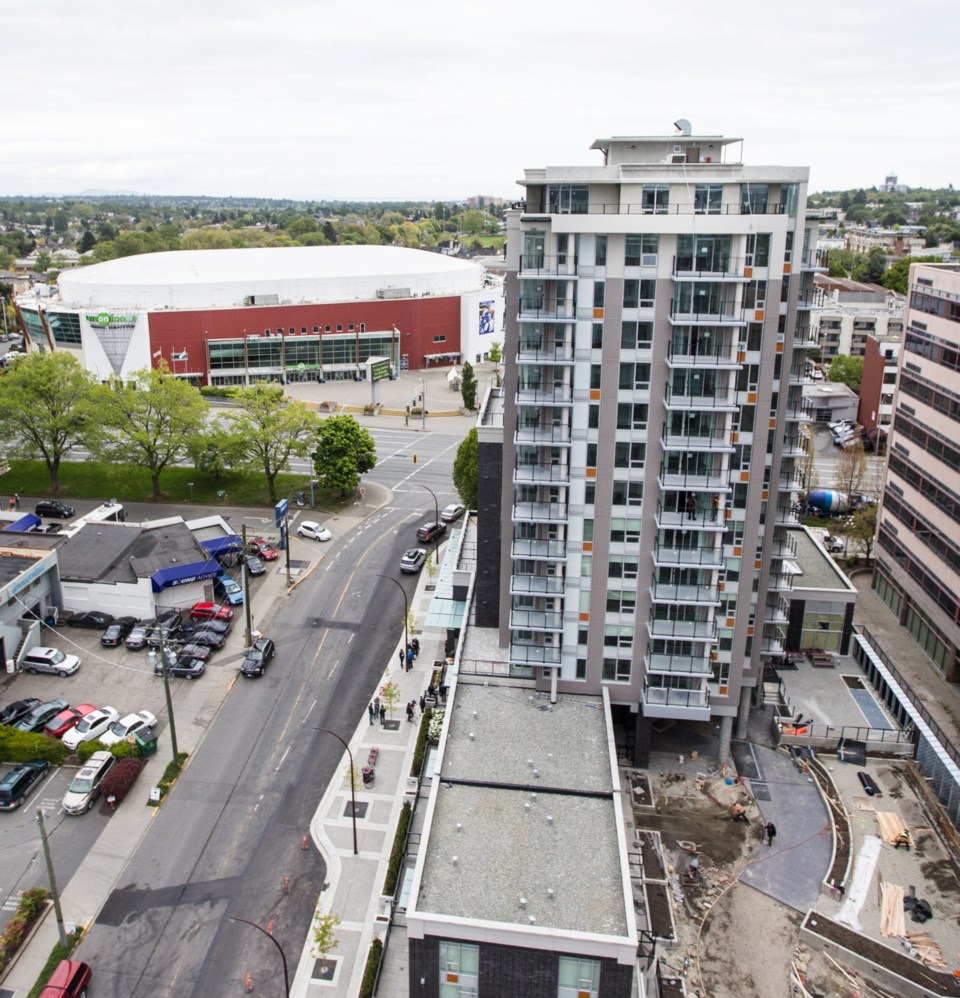Greater Victoria’s ultra-tight rental vacancy rate has loosened slightly in the past year, while the average rent climbed by 7.5 per cent.
The overall vacancy rate in the capital region is now at 1.2 per cent, up from 0.7 per cent a year ago, Canada Mortgage and Housing Corp. said in its new rental market report released today.
Even so, renters in Greater Victoria are still faced with an extremely low vacancy rate.
The region has a total of 26,371 rental apartment and townhouse units, up from 25,580 a year ago. The vast majority are rental apartments.
In October of last year, the average apartment rent was $1,072. Now, it has risen to $1,170, the federal agency said.
A renter of an average two-bedroom pays $1,406 now, compared with $1,288 a year ago, it said.
The increase is likely due in part to more units turning over as long-term tenants move out of their apartments, the agency said. “The turnover in Metro Victoria was 18.1 per cent in 2018, exposing roughly one in five units to current market-rental prices.”
Over a period of years, the capital region has seen a shift in demand from home ownership toward rental, the report said.
The purpose-build rental universe has been slow to respond, it said, leading to several years of undersupply relative to demand, and a low vacancy rate.
Developers spotted an opportunity in the market and have been launching rental projects in recent years, often large apartment buildings with long construction times. It’s not unusual to see a major project take up to two years to complete, especially at a time of rising construction costs and a shortage of labour.
Early this month, CMHC said that the rate of construction for new rental units, over a multi-year period, is the highest experienced in the region since the 1970s.
In the meantime, the region has seen the loss of older apartment buildings that had offered lower rents. As well, strong housing prices have led owners of rental homes to sell them, eliminating more rental opportunities from the pool.
Most new households are choosing to rent rather than buy, CMHC said.
Housing prices are strong in the capital region compared with other parts of the country. The benchmark price for a condominium last month in Victoria’s core was $502,600, and a single-family house was $881,000, according to the Victoria Real Estate Board. The core is made up of Oak Bay, Victoria, Saanich, Esquimalt and View Royal.
Population growth, while continuing, peaked in 2016 and has slowed, CMHC said.
Rental vacancies vary throughout the region.
While the vacancy rate in James Bay is 0.5 per cent, it’s 2.2 per cent in Oak Bay.



